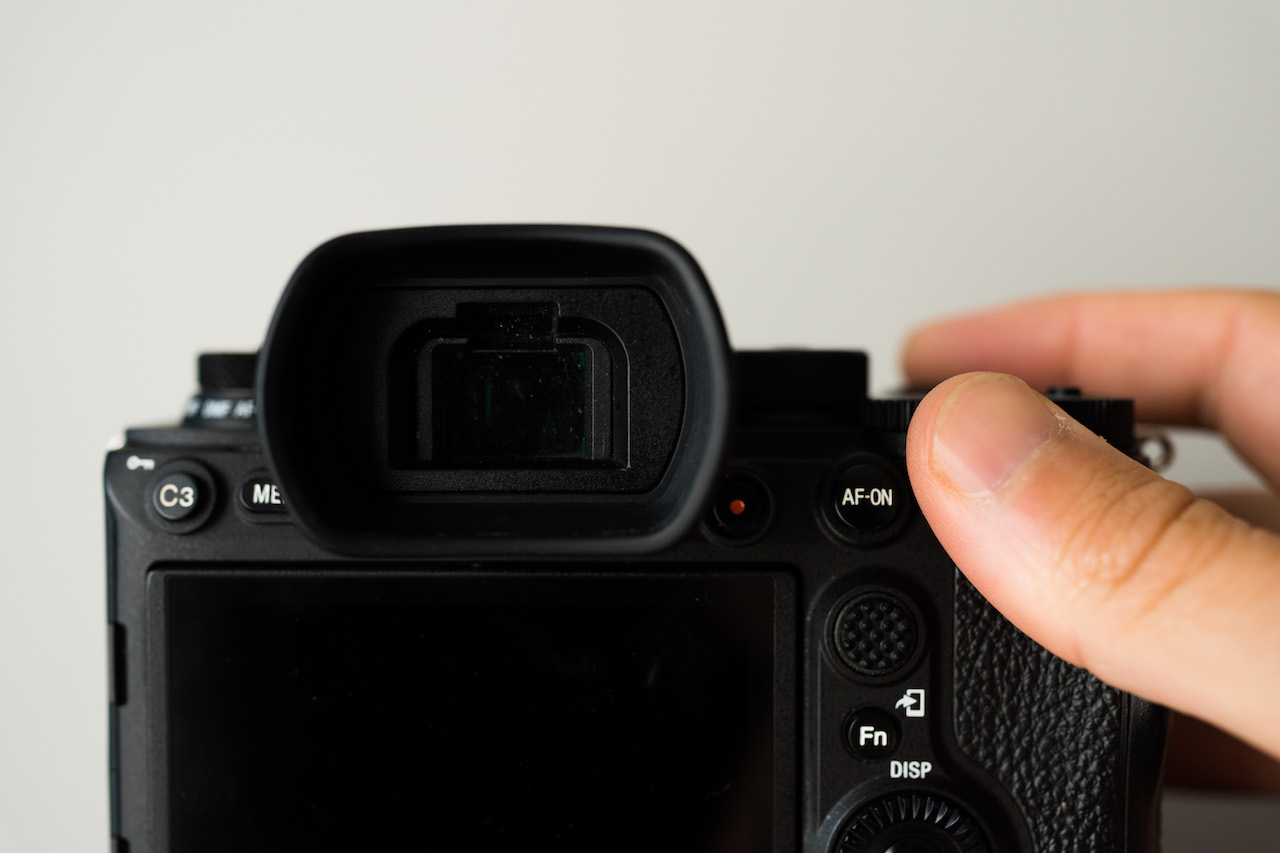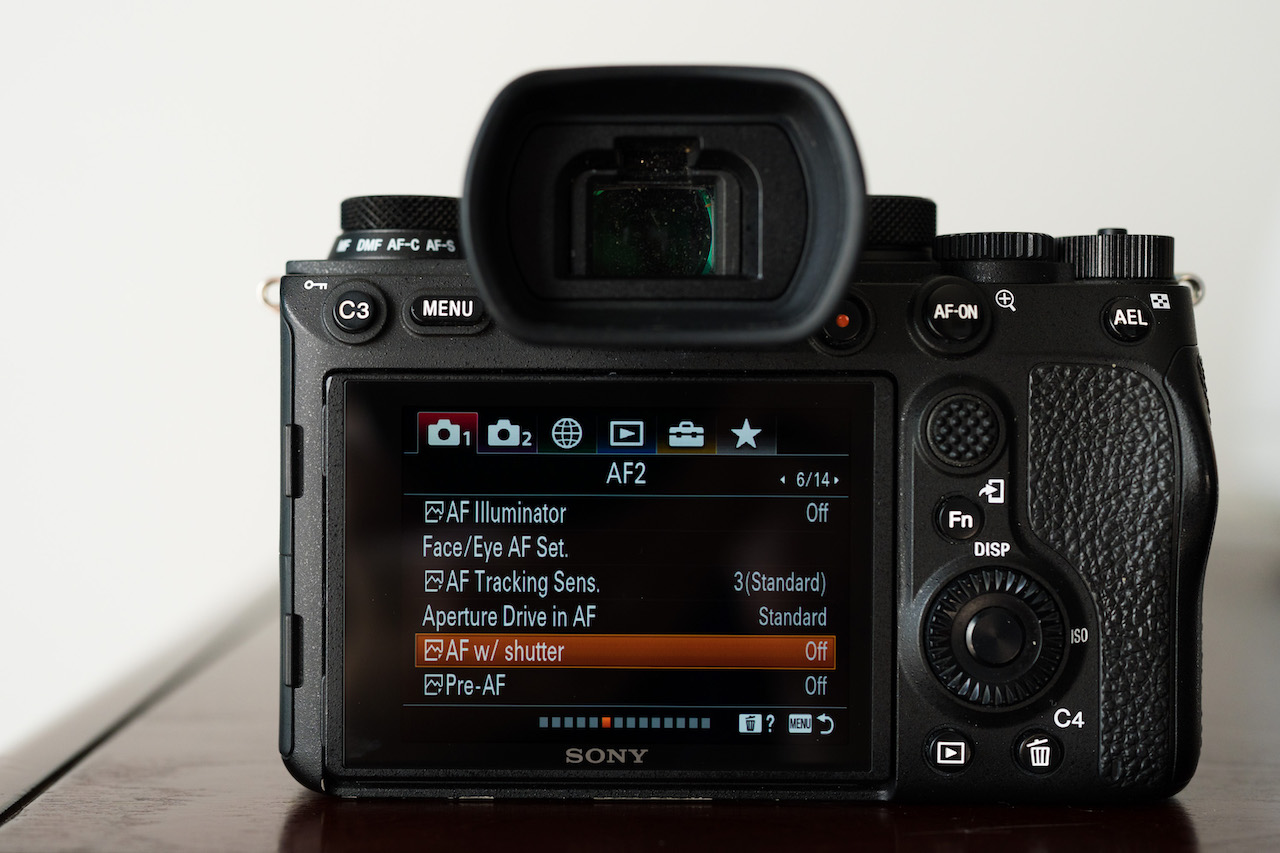When the mirrorless revolution came about, autofocus capabilities rapidly improved. Nowadays, many photographers live in continuous autofocus (AF-C / AF Servo) because in most situations, it’s plenty accurate. Before the era of eye autofocus, a bajillion phase detection points, and face detection, there was a raging war between photographers online. This war was between those who used back-button focus, and those who did not.
Back-button focus may be a completely foreign topic to newer photographers so let’s talk about what it is, the pros and cons of using it, and whether or not it’s still relevant with modern cameras.

What is Back-Button Focus?
By default, almost every camera out of the box will auto-focus with a half press of the shutter button. Back-button focus removes the auto-focus function from the shutter button and remaps it to a button on the back of the camera. Typically the “AF ON” or “AE-L” buttons are used instead.
How to Set Up Back-Button Focus
This often requires a couple setting changes. On Sony, you have to set the “AF w/ shutter” option to “OFF” to remove auto-focus from the shutter button. Next, set the “AF ON” (or a button of your choice) to “AF ON.” If you are having trouble finding the necessary settings with your camera, google “[your camera model] + back-button focus” and I’m certain you’ll find a guide.
And that’s it. You are now a back-button focus user. But wait… Now you have to use two buttons instead of one just to get an in-focus photo. Why would anyone want that?

The Advantages of Back-Button Focus
At first use, back-button focus feels like extra work without much benefit. But, once you have the muscle memory, there are significant advantages. Back-button focus essentially gives you access to three different focus modes all at the same time. By setting the camera in AF-C, you can use continuous autofocus, or simulate single autofocus and manual focus, simply by altering your mechanics.
If you want to use AF-C (AF servo), hold down your AF ON button.
If you want to use AF-S (single shot AF), press your AF ON button until you have focus confirmation, and then release it.
If you want to use MF (manual focus), don’t press anything, and freely use the manual focus ring on your lens.
Once you are used to the change, you will find this helpful in so many ways.
When a subject changes from still to moving, or vice versa, you can rapidly switch from tracking them, to firing away without re-establishing focus.
When you are in a situation where autofocus is difficult, like a very dark environment or backlit scenario, you can avoid using auto-focus and use manual focus instead, without having to reach to your lens or camera body to switch.
When you and your subject are still, you can focus once and take multiple photographs without having to keep your shutter finger half-pressed after capture.
Overall, back-button focus allows you to fluidly adapt to changes in subject matter rather than flipping through various focus modes. For anyone who captures events where moments only happen once, any increase in speed is a massive benefit.
The Negatives of Back-Button Focus
The primary negative of back-button focus is the adapting phase. If you’ve been using shutter focus for a long time, it’s going to take a minute to adjust to the process of controlling focus with your thumb. If you do photography for a living, I recommend going out for a few long walks with your camera to take pictures and adapt to the new process. The last thing you want to do is train on the job. Try to stick with it even when it feels awkward. It will soon click and feel natural.
Another small negative is the increased dancing that your thumb now has to do. I typically control the focus point with my thumb, which means with back button focus my thumb is constantly dancing from the joystick to the AF-ON button. Enough practice and you’ll get quick enough but if you shoot fast-paced subject matter, be prepared for a thumb workout.
A quick tip on cameras with pressable joysticks. You can try programming AF ON to the press function of the joystick (multi-slc center button on Sony). This way, you don’t have to ever lift your thumb from the joystick. I found this miserable on cameras like the A7RIII and A7III, but pleasant on the A7RIV / A9II. It really depends how comfortable and rigid the joystick is.
Is This Necessary with Modern Cameras?
I’ve used back-button focus for as long as I can remember being a photographer. Like shooting in manual mode, once you make the connections in your brain, anything else feels foreign.
Recently, I decided to try out autofocus on the shutter button again. At first, it felt wonderful. My thumb could finally be a freeloader again. But then I started running into those pesky situations where back-button focus shines. I found myself lowering my camera to switch focus modes, or turn auto-focus off. Eventually I put manual focus toggle on my AF-ON button as a way to stop establishing focus on every shot. I put my camera in AF-S for the first time since I owned it.
While it’s less necessary today with the impressive autofocus systems of modern cameras, back-button focus is still the king when it comes to control and speed.
Article and Photos by Robert Hall
